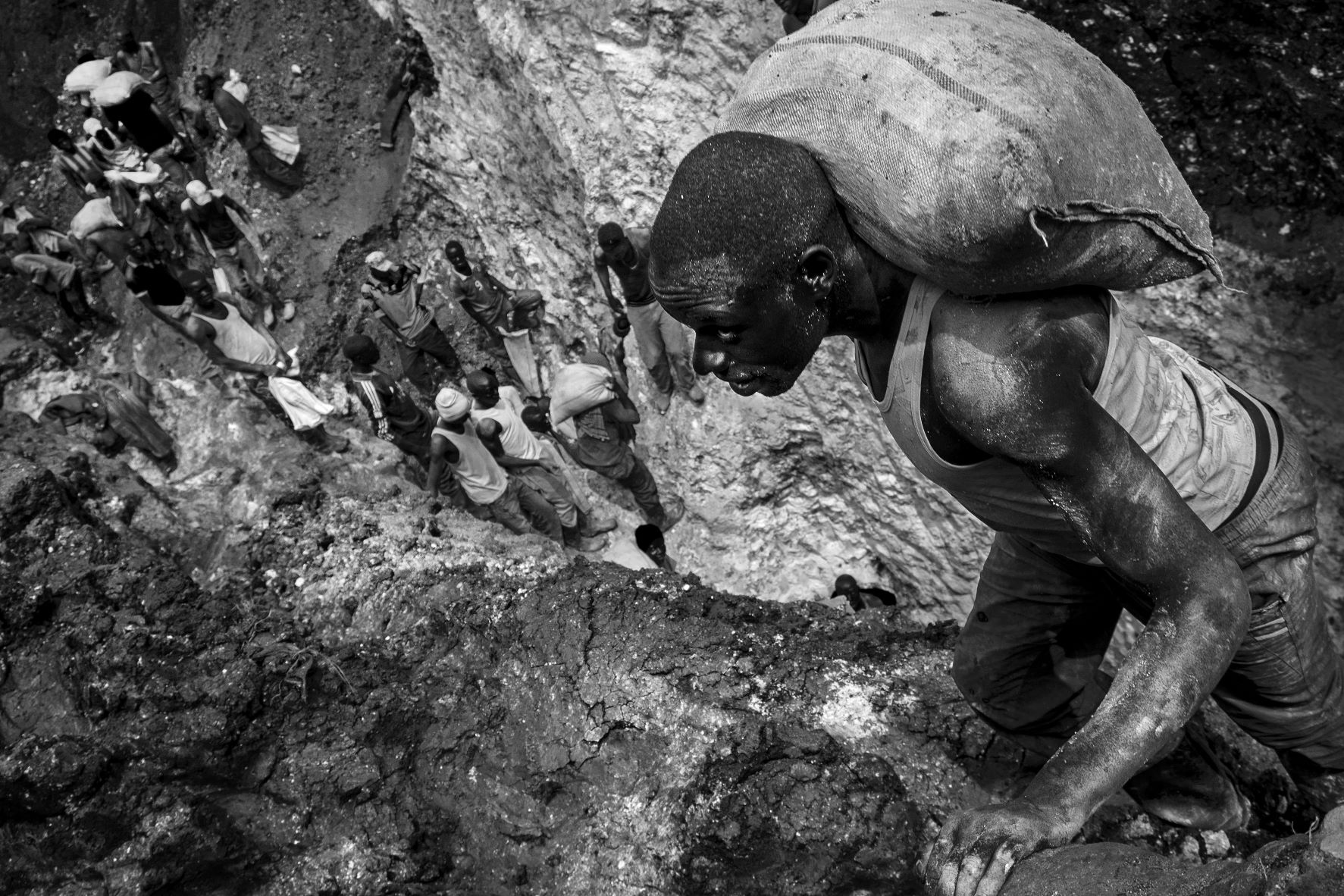The process of decarbonisation and electrification of the economy requires increasing quantities of metals and minerals. Some of these, due to their economic importance and the risks linked to their supply, become critical and drive the European Union to reopen mines and diversify its supplies, replacing commercial partners and promoting recycling. These actions consolidate a certainty: there will be no ecological transition without raw materials (and, in part, secondary raw materials).
From mineral oils to true minerals, demand is expanding
The exploitation of natural resources – or “extractivism”, to use a journalistic term – is a phenomenon that has been going on for millennia and that, at least in the medium term, we will continue to fuel. By 2060, according to one of the scenarios developed by the OECD, our total consumption of virgin materials could reach 167 billion tonnes. Meanwhile, the International Resources Panel, a working group launched in 2007 by the United Nations Environment Programme (UNEP), predicts that this figure will be as high as 190 billion tonnes. For the most part, these materials will be minerals (metals and non-metals) and fossil fuels.
However, each of these goods – be it coal, gold, copper, cobalt, or silicon, to name a handful – is subject to the same rule: the law of diminishing returns. The extraction cycles for individual resources go from a “zero” time when picks and drills are still inactive, to a second “zero” time when the diggers cease their activity. In between the two extremes is the so-called production peak, a watershed moment signalling that from then on, extraction will be more difficult (in terms of volumes and technology) and thus progressively more expensive. Or, as in the case of fossil fuels, no longer convenient for other reasons as well, including the not unlikely prospect of ecosystem collapse.
The climate crisis imposes an unavoidable requirement: to achieve the goal of decarbonising the economy. The International Energy Agency (IEA), in the 2022 edition of the World Energy Outlook IEA, predicts that this turning point is close. In fact, for the first time, even in the most cautious scenario based on already-approved policies, the demand for coal will peak in the next few years, the demand for gas will plateau by the end of the decade, while the demand for crude oil will reach its peak by the mid-'30s before falling slightly. All thanks to decarbonisation policies and the introduction of renewable energy.
However, closing one extraction cycle inevitably requires intensifying another. To build solar panels, wind turbines, batteries, and the appropriate energy infrastructures, we need metals and minerals in amounts that, currently, we simply do not have. According to the estimates in Metals for Clean Energy, a study published by KU Leuven University and commissioned by Eurometaux, compared to current consumption, the energy transition in Europe will require, by 2050, 33% more aluminium, 35% more copper, 3500% more lithium, 100% more nickel, 45% more silicon, and 330% more cobalt. These percentages represent thousands (and sometimes millions) of tonnes of materials per year. This means that a steady and stable supply needs to be ensured. But how?
The European Action Plan on critical raw materials
Globalisation has made the world’s economies interdependent. And this is all the more true for critical raw materials, which are highly concentrated in limited extractive regions: for example, China supplies 98% of the EU’s demand for rare earths, Turkey 98% of borate, Chile 78% of lithium, Kazakhstan 71% of phosphorus. In the case of metals such as iridium, rhodium, and ruthenium, South Africa alone is responsible for virtually the entirety of global production.
Thus, it is no surprise that the European Union, champion of free competition, is attempting to counteract these dependencies, pursuing the mantra of “diversifying the supply chain”. However, this means abandoning both monopoly regimes and regimes in general. The Russian invasion of Ukraine, complex relations with Beijing (not to mention tensions with superconductor powerhouse Taiwan), and the reignition of clashes in the Democratic Republic of Congo for control of coltan and cobalt in North Kivu all reaffirm the need for Brussels to continue along the path decided upon in 2020 with the Action Plan on critical raw materials. This means diversifying the supply from primary and secondary sources, improving efficiency and circularity, and promoting responsible supplies at a global level, also through a search for new commercial partners.
Different degrees of criticality: the example of zinc
Achieving these goals requires first defining which resources are critical. The Action Plan drafted by the European Commission is based on the list of Critical Raw Materials that the Joint Research Centre has updated every three years since 2011, based on two parameters: economic importance and supply risk. Over time, these factors have led the list to grow longer. In 2020, there were over 30 critical materials, more than twice as many as those identified in the first edition.
These 30 materials include bauxite, natural graphite, and light and heavy rare earth elements. However, to show how criticality changes according to the reference context, zinc is not included. This mineral, currently absent from the European list, was added to the list released in 2022 by the US Geological Survey. After all, zinc is a crucial material for the new aluminium and steel production plants being built in the United States, whose blast furnaces will soon try to replace products normally imported from Asia.
“The European list of critical raw materials is completely based on materials that are currently not extracted within the EU’s borders. This is a big problem because there is no long-term vision for strategic metals required for the energy transition, such as zinc, copper, nickel, and so on. We have many others that we currently extract in small quantities in Europe but will be needed even more in the future,” Klas Nillson, Director of Group Communications at Boliden, Europe’s largest mining company, tells Renewable Matter. “Zinc’s main use is galvanisation. It is widely used for all steel-based constructions, such as buildings and cars. Consider also the development of offshore wind power, which will multiply the number of wind turbines at sea. Zinc protects steel from corrosion, increasing its lifespan by about a century compared to its untreated expectancy.”
European-made magnesium?
Conversely, the 2020 EU list of critical raw materials does contain magnesium, a mineral of which China controls 89% of the global supply. This near-monopoly, in the event of any interruptions to the supply chain, could halt European steel production. According to a working document seen by Reuters in May 2022, the European Commission is preparing to invest 2 billion euros to relaunch fusion activities by 2025, after over 20 years with inactive furnaces, starting in Romania. “Despite the wealth of mineral resources, the EU’s magnesium industry collapsed because it could not compete with the low prices of magnesium imported from China,” says Alexandru Rosu, CEO of Verde Magnesium, a company that calls itself “the EU’s future primary metallic magnesium producer”.
“The lack of competitiveness was due to higher costs in the EU compared to China with regards to regulatory compliance, energy, and labour. The closure of the magnesium industry in the EU did not solve the environmental problem because every tonne of imported mineral has an average carbon footprint of 28 tonnes, without considering the impact of logistics. Meanwhile, in our tests, with a view to the restart set for 2025, we achieved a 1 to 1 ratio,” notes Rosu.
Diversification requires wariness of new commercial partners
If supply is to match demand, it should be no surprise that Brussels’ plans are accompanied by the jostling of possible new sellers. In July 2022, Turkey revealed the discovery of the second-largest deposit of rare earth elements in the world in the Eskisehir district of central Anatolia. But all that glitters is not gold. “The Turkish government’s announcement is lacking in details. A formal estimate of resources or reserves (minerals that are directly usable or otherwise, Ed.) would contain a lot more information, including the grade, tonnage, and cut-off grade. It would provide more basic data and evidence and would be signed by a competent expert,” says Kathryn Goodenough, Principal Geologist at the British Ecological Survey and an expert on the deposit in question, Kızılcaören.
“Even though I do not know exactly what capacity Turkey has at its disposal, what is certainly lacking currently is a processing plant for rare earth elements. If the deposit is to successfully produce, I imagine that considerable involvement from China will be necessary.”
European commercial diplomacy, meanwhile, seems to have more wide-ranging plans. In February 2022, through the Global Gateway Investment Package, the EU announced 150 billion euros of investments in the African continent to support the green and digital transitions. AfricaMaVal fits within this context. Announced in June 2022, the project aims to “develop EU-Africa partnerships ensuring a responsible sourcing of minerals for European industry while providing sustainable local co-development” in ten countries: Democratic Republic of Congo, Senegal, Zimbabwe, Mozambique, Gabon, Namibia, Tanzania, Madagascar, Morocco, and South Africa.
In short, alongside new mines in Europe, we will export know-how to build loyalty with new commercial partners. This time with Green Deal-level standards and without repeating the mistakes of the past. Perhaps, in the future, there will be no need for the EU Commissioner for Internal Market Thierry Breton to once again declare: “We prefer to be supplied by third countries and turn a blind eye to the social and environmental impact, not to mention the carbon footprint of imports. But mining in Europe does not have to be a dirty business” (Financial Times).
The image is taken from the reportage "The Victims of our Wealth – DR Congo" (2016) by Stefano Stranges. The reportage is published on RM #43.
Download and read the Renewable Matter issue #43 on Critical Raw Materials.



